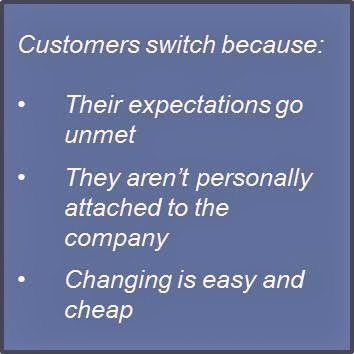A revolutionary change may be at hand
Many Customer Success teams work with customers to help them learn and deploy new software in order to increase usage and build relationships at a critical time in the customer lifecycle. Others perform an important account management role, providing ongoing support and generating renewals. Often, however, CSM teams fill their days responding to customer complaints or being pressured to push upgrades to compensate for high churn. If CSMs spend most of their time mending frayed relationships or engaging in retention heroics, managers should be concerned—perhaps the Customer Success function is really there because the company lacks successful customers.
Sound familiar? Take heart. This situation is reminiscent of the transformation that occurred in manufacturing Quality Assurance departments not long ago. The important lessons they learned can help you lead your SaaS organization out of the problem-solving dark ages and into a problem-prevention renaissance.
Learning from the Quality Movement
Reeling from tough economic times in the late 1970’s, Americans needed answers. Japanese brands Sony and Panasonic had decimated the American consumer electronics industry, while Toyota, Honda, and Nissan were busy thumping the Big Three auto makers. The Japanese produced significantly higher quality, lower cost goods, and consumers everywhere snapped them up. From the Rust Belt to Silicon Valley, the once-dominant American manufacturing industry was in crisis.
Then in 1980, NBC News ran a program entitled, “If Japan can… why can’t we?” The show revealed how the quality improvement methods we taught the Japanese after World War II helped them beat us at our own game. Dr. W. Edwards Deming’s work with the Japanese challenged conventional notions that high quality must come at a high cost. Their global success proved that high quality meant far less waste and rework, lower costs, more reliable products, and happier customers.
American industry got the message. After losing its way during the post-war boom, it was time for a new start. Led by Motorola, Alcoa, Ford, and many others, manufacturing rebounded by rediscovering quality methods, revamping operations, and regaining lost market share. Today, defects are no longer measured in percentages but in parts per million. It’s all due to a fundamental shift—manufacturers now achieve high quality not through inspection and remediation but by designing it into products and processes in the first place. Gone are large “test and fix” Quality Assurance operations, thanks to robust product designs, high capability production lines, and responsive supply chains. The modern, lean Quality function no longer requires scores of repair technicians but a select few quality consultants working upstream to ensure improvement never ends.
Enlightenment in Customer Success
Just as manufacturing defects crippled manufacturing companies, experiential defects now rob SaaS companies of millions in revenue each year. Too often after buying SaaS offerings, customers find features lacking, software difficult to use, information hard to find, and support frustrating and unresponsive. This leads to churn.
When your Customer Success team becomes a de facto “save desk,” it’s behaving just like the Quality Assurance department of old, reacting to problems rather than adding value from the start. Worse, factors affecting churn can appear at multiple points in the process, but these problems get funneled to the Customer Success team in the name of “efficiency.” As a result, the team spends its time solving avertible problems at great expense.
To remedy the situation, SaaS leaders must shift their focus to prevent churn in the first place:
• Create better products
• Deliver better services
• Strengthen customer relationships
To accomplish these goals, it’s critical to address the negatives that make customers leave and the positives that make them loyal. Leaders must dig deeper to uncover the cause-and-effect relationships that lead to better results. Doing so eliminates frustrations, saves time and money, and grows revenue through more successful installed-base sales campaigns. Given relatively low barriers to entry and increasingly crowded markets, companies that keep and grow hard-won market share will be the survivors when SaaS markets inevitably shake out most of the competition.
Joining the Renaissance
The spark that ignites change is close at hand. Now more than ever, SaaS executives and investors understand the financial consequences of customer churn, emphasizing continuous improvement and analyzing customer use patterns and satisfaction data to drive software revisions. Executives are also beginning to look beyond the technology and to the people using it, placing greater importance on the overall customer experience. They see that the art of up-selling, cross-selling, and referral selling begins with a clean canvas of happy customers. As helpful visualization and predictive analytics technologies arrive on the market and teams adopt time-tested process improvement disciplines, your SaaS company can build customer loyalty that transcends software development and involves all aspects of the business.


